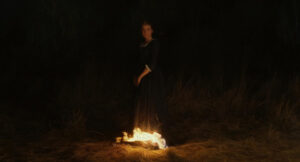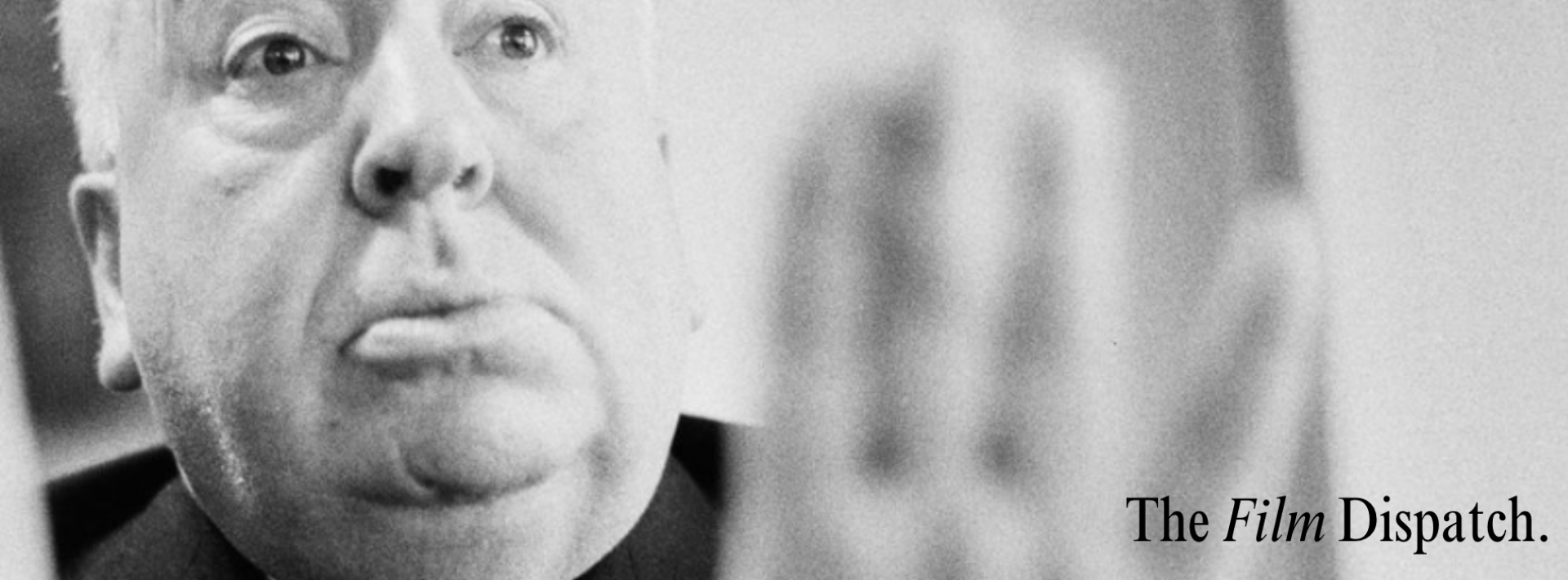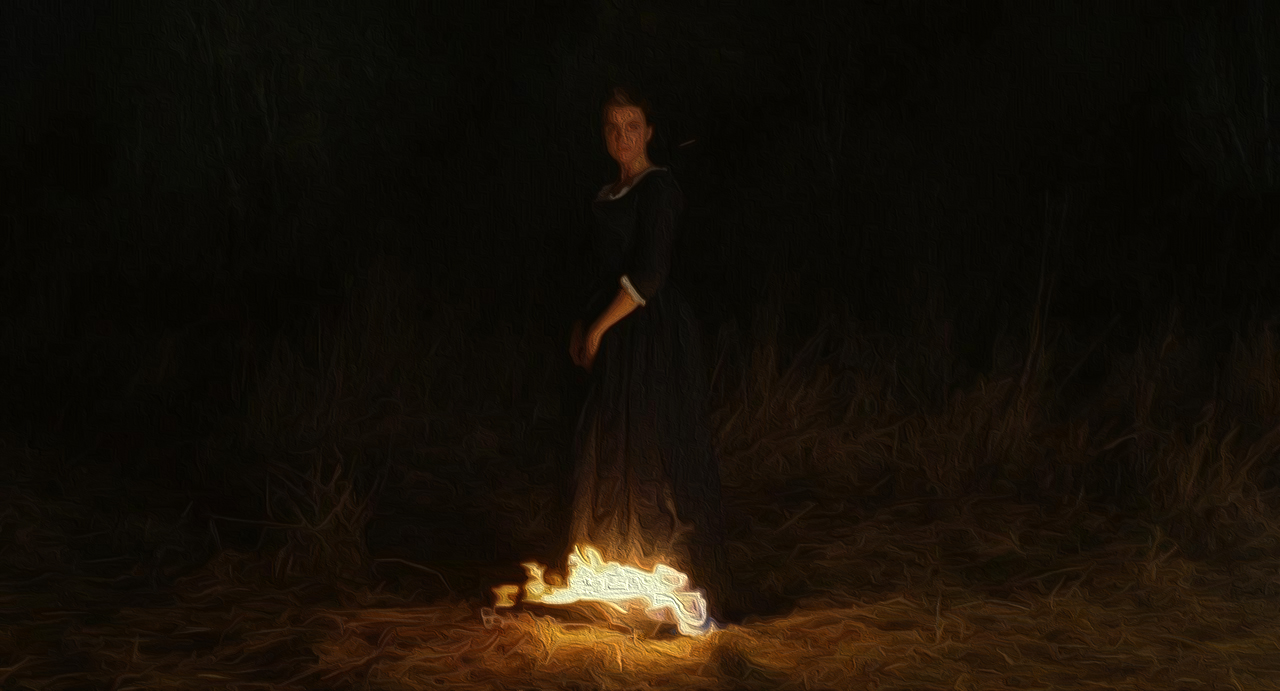
With the modernization of society and the surge in feminist and LGBTQ+ movement, we’ve seen more and more lesbian stories moved to big screens, either represented correctly or falsely.
Unlike gay stories, lesbian love always comes from the miseries these woman characters went through together, in most cases, because of their common identity as women —perceived lesser in society compared to men. Filmmaking is a traditionally male dominated industry which has affected the interpretation of women’s stories and moulding of female images, especially concerning the portrayal of same-sex love. This interests me and the following are my research findings, and a case study in Portrait of a Lady on Fire.
- The theories of the Female Gaze:
Historically, cinema has not been very inclusive and diverse in terms of representing disadvantaged groups, such as women and queerpeople, especially lesbians. In mainstream films, women are often endowed with implicit or explicit sexual implications to satisfy men’s sexual fantasies. In other words, the image of women is largely molded by the male gaze. The term ‘male gaze’ was brought up by Laura Mulvey in 1975, which represents the gaze of straight male viewers, the gaze of male characters and also the gaze of male creators of the film. It is used to describe the way in which mainstream cinema portrays the world from the position of straight men, which tend to reduce women to sexual objects, disregard their feelings and emotions, relegate them to roles that serve only to fulfil men’s desires and narratives. In Mulvey’s article “Visual Pleasure and Narrative Cinema”, she mainly discussed aspects of voyeurism and fetishism of the male gaze. She took Alfred Hitchcock’s 1954 film, Rear Window, as an example to analyse its narrative choice, camera angle and props which reflect the concept of the male gaze. Mulvey centred on the concept of “scopophilia”–men obtain pleasure by gazing and placing women as spectacles to be objectified and viewed. In the film, women are unable to return this gaze and deprived of adequate representations as individual human beings.
The male gaze has dominated the way of looking in the film industry for a long time. In response, the theoretical term “female gaze” appeared to represent the gaze of the female viewer. Nowadays, it has been widely used to refer to the perspective female filmmakers brings to a film that would be different from male creators, or view men as sex objects.
The female gaze is composed of three viewpoints:
- The individual filming
- The characters within the film
- The spectator
In women’s films, female leads are presented as diegetic story-tellers rather than spectacles. These films are meant to represent the desires of female protagonists and female viewers. According to Zoe Dirse, she pointed out that by having a female cinematographer, women are then allowed to be viewed as what they really are and not the voyeuristic spectacle that the male gaze makes them out to be.
In women’s films, lesbians are one of the most underrepresented groups. Few films tell lesbian stories, even when they do, ‘the characters are often hypersexualised or killed off’ (Yale Daily News). The controversial lesbian film Blue Is the Warmest Colour (2013) has been criticised for its dominant use of the male gaze and lack of female gaze. It was even labelled as a “patriarchal gaze” by some reviewers. It seems to be a big challenge for film creators to bring in a purely female stance on this subject.
- How Portrait of a Lady on Fire employs the Female Gaze:
However, the French film Portrait of a Lady on Fire has revolutionized the way lesbian stories are depicted. Written and directed by a lesbian filmmaker, the film tells the story of Marianne, a painter who had been commissioned to draw a wedding portrait of Héloïse, who is reluctant to marry a man she has never met. Under the pretext of Héloïse’s walking companion, Marianne must closely observe and sketch her secretly. Sciamma depicts this process while their romance evolves. The story was created out of glances and stares. The filming techniques depend heavily on the play of the eye. The film demonstrated a single figure of cinematic style: physical poise and stillness, exemplified in the fixity of a gaze.
What makes this film unusual is its storytelling techniques. It tells the lesbian story through the eyes of the women characters rather than a heteronormotive lens. Many other lesbian love stories often emphasise the taboos of sex, such as Blue Is the Warmest Colour, which included a six-minute sex scene so hostile and demeaning that made one of the actresses in the scene feel ‘horrible, like a prostitute’. But Portrait of a Lady on Fire is like a rebuke to the previous parameters of the depiction of same-sex love. The only moment of intercourse showed fingers in an armpit and the only nudity is when Héloïse is stretched on a bed as Marianne gazes at her reflection and sketches a self-portrait. The director Sciammaexploits the radical power of the female gaze to create a swoon-worthy, enrapturing lesbian romance. Unlike many male directors who prefer to throw in sultry sex scenes or a sensationalist dramatic coming-out sequence, Sciamma refrains from this and keeps more modesty in the film. There is no redundant line nor indulgent shot.
Besides, to subvert the male gaze and rebuke the objectification of women, there are hardly any men on-screen.When they do appear, the camera just shows their backs or their faces out of focus. Even without men’s faces in the film, their influence can be felt. The director describes the multiple ways in which the female protagonists are constricted by the patriarchy. In the film’s period setting when women are entirely marginalised in art, the females’ efforts have been neglected or simply erased. A scene later in the film demonstrates the dilemma faced by the female artists at that time. When Marianne is looking at one of her paintings at an exhibition, a man approaches her, praising the picture and attributing it to her father. She explained that this was her work but she had to submit it in her father’s name, in order to get her work shown.
Also, the whole story was based on the explicit manifestation of the male gaze. Héloïse was betrothed to a rich Italian man as her sister leaped off the cliff to escape the betrothal. She was locked inside to ensure her safety so that her family’s fortunes could be guaranteed. Marianne’s job is to create Héloïse’s portrait to please her future husband–a potential male gaze. That’s why Héloïse asked Marianne when seeing the finished portrait, “Is that how you see me?” Marianne responded that the painting must adhere to classical artistic “rules, conventions, ideas”, which were set by male artists and portrayed women by male hegemony. Héloïse shoots back: “The fact it isn’t close to me, that I can understand. But I find it sad it isn’t close to you” because she wants Marianne to know she is not like any other objects she has painted before. She is unruly and an independent human being. This points out the pernicious power of the male gaze: unwittingly and impertinently it objectifies and constricts women instead of treating them as individuals.
Another storyline is about the young maid Sophie getting an abortion. Marianne crafts a painting out of the delivery scene. The film also reinterprets the Greek myth of Orpheus and Eurydice. The director Sciamma noted the story is about ‘how male gaze can kill you.’ Orpheus made the poet’s choice but not the lover’s as he looked back at Eurydice, thus leaving her in the underworld. He chose the memory of a woman rather than saving her life.
As Sciamma said, this film is a manifesto about the female gaze. The very nature of women’s art and the marginalization of women in the art world are built into the movie via a subplot (an unwanted pregnancy and an abortion) in a way that echoes unmistakably with the present day. She noted, “the male gaze is obsessed with representing lesbians.” This is because authentic lesbian stories “are really dangerous for the patriarchy,” and filtering them through dominant male perspectives is a way to control it. This film provides new narratives that challenge the existing power structures and reassert feminist perspectives to demand narrative justice. Maybe the biggest achievement of this film is to raise a question among the audience: why have we allowed one perspective to dominate for so long? And, how we can destroy the false portrayals and paint our own pictures?
Resources:
Dirse, Zoe. “Gender in Cinematography”. Journal of Research in Gender Studies.
Laura Mulvey, Visual Pleasure and Narrative Cinema, Screen, Volume 16, Issue 3, Autumn 1975, Pages 6–18, https://doi.org/10.1093/screen/16.3.6
https://www2.bfi.org.uk/news-opinion/news-bfi/features/portrait-lady-fire-female-gaze
Written for The Film Dispatch by Yvonne Wang.

